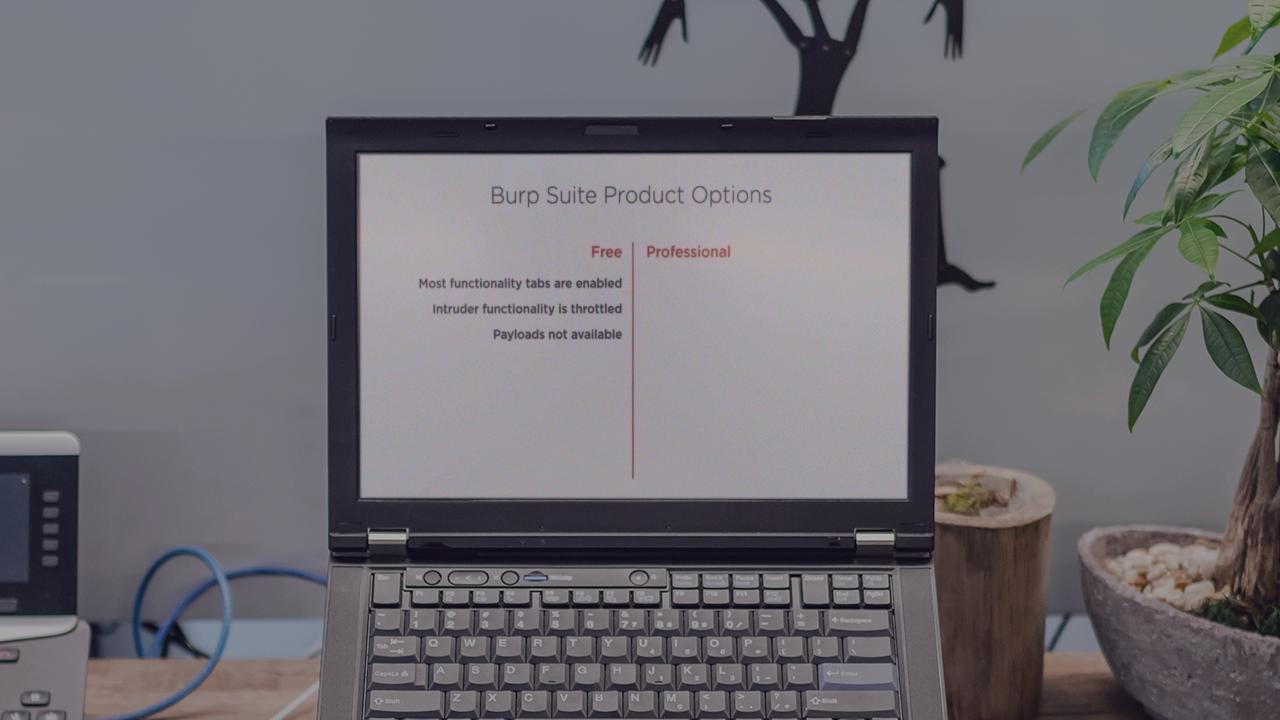

- #Web application penetration testing using burp suite how to#
- #Web application penetration testing using burp suite install#
- #Web application penetration testing using burp suite update#
- #Web application penetration testing using burp suite manual#

However, to do this, the client must trust the generated certificate. Burp Suite acts as a "man-in-the-middle" by intercepting and decrypting the communication using a generated certificate. When your browser requests a secure website (HTTPS), the transmission is encrypted using SSL/TLS encryption. We must add a certificate to our browser in order to intercept and analyze encrypted communication between a client and a server. Click “Next.”įinally, on the last screen, leave the settings as default and click “Start Burp.” Adding an SSL Certificate to the Browser For our demonstrations, we will be using the default setting. Next, you will see a screen asking you if you would like to create or open a project. You will be presented with an error about JRE, just ignore this message and hit “OK” The second way is to open Burp Suite from the applications menu under “Web Application Analysis.” Click on “burpsuite” to start the application. The first way is to open a terminal and type burpsuite. You can start Burp Suite in a few different ways.
#Web application penetration testing using burp suite install#
Install the FoxyProxy Standard extension in your browser.FoxyProxy has a browser addon for Firefox and Chrome.įollow these steps to set up FoxyProxy in Firefox: It is commonly used with Burp Suite to forward network traffic to Burp. This extension lets you quickly toggle between proxy configurations, enabling you to use Burp Suite when needed instead of manually entering settings in the browser. We recommend installing the FoxyProxy extension for your browser.

Now that we have everything up to date, it’s time to move on to our last step, which is installing a proxy addon to the browser.
#Web application penetration testing using burp suite update#
If an update is available, it will update to the newest version for Kali. Next, to check if Burp Suite needs to be updated, type: sudo apt upgrade burpsuite The package lists downloaded by the update command contain information about the latest version of the software packages available.

This will update the system's package manager's lists. Updating Burp Suiteįirst, open a terminal and type: sudo apt update -y Installing the latest version helps keep Burp updated with essential features and fixes.
#Web application penetration testing using burp suite how to#
Now that you have a brief understanding of Burp Suite and its purpose, we will dig deeper into how to use it in the following sections.īefore starting, ensure you have the latest version of Burp Suite installed on your system and the appropriate proxy settings. Portswigger also offers a Burp Suite Professional edition and a Burp Suite Enterprise edition, which provide advanced features and added functionality suitable for more complex testing scenarios.Īt the time of writing, Burp Suite Professional retails for $449, while the Burp Suite Enterprise edition starts at $8,395
#Web application penetration testing using burp suite manual#
The Community Edition is a free version of the tool, and it includes the essential features required for the manual testing of websites and web services. In this article, we will use the Community Edition of Burp, installed by default in Kali Linux. A favorite of bug bounty hunters, Burp is a collection of web application testing tools designed for penetration testing.Īt its core, Burp functions as an interception proxy, allowing users to redirect browser traffic through the Burp proxy server while targeting specific web applications, making it an essential tool for identifying and addressing web application vulnerabilities.īurp Suite tools include features such as Proxy, Repeater, Intruder, Comparer, Extender, and Extensions, which allow for rapid and versatile testing of web applications.īy intercepting and modifying HTTP/HTTPS traffic between a user's browser and a target web application, it enables security professionals to identify vulnerabilities and potential attack vectors. Burp Suite was developed by PortSwigger and started in 2003 by creator Dafydd Stuttard, who wrote the first version of Burp, with actual burping sounds.


 0 kommentar(er)
0 kommentar(er)
